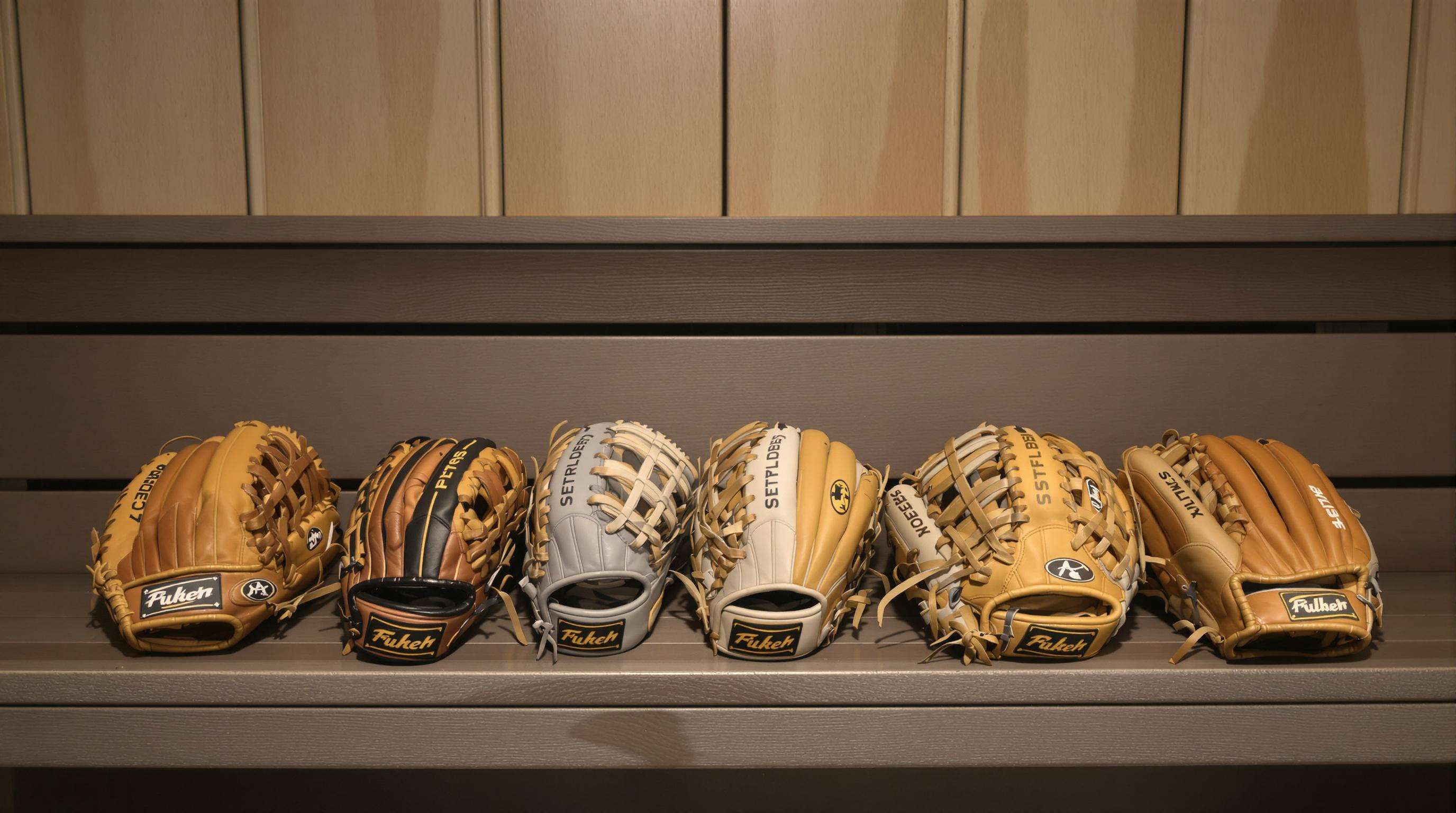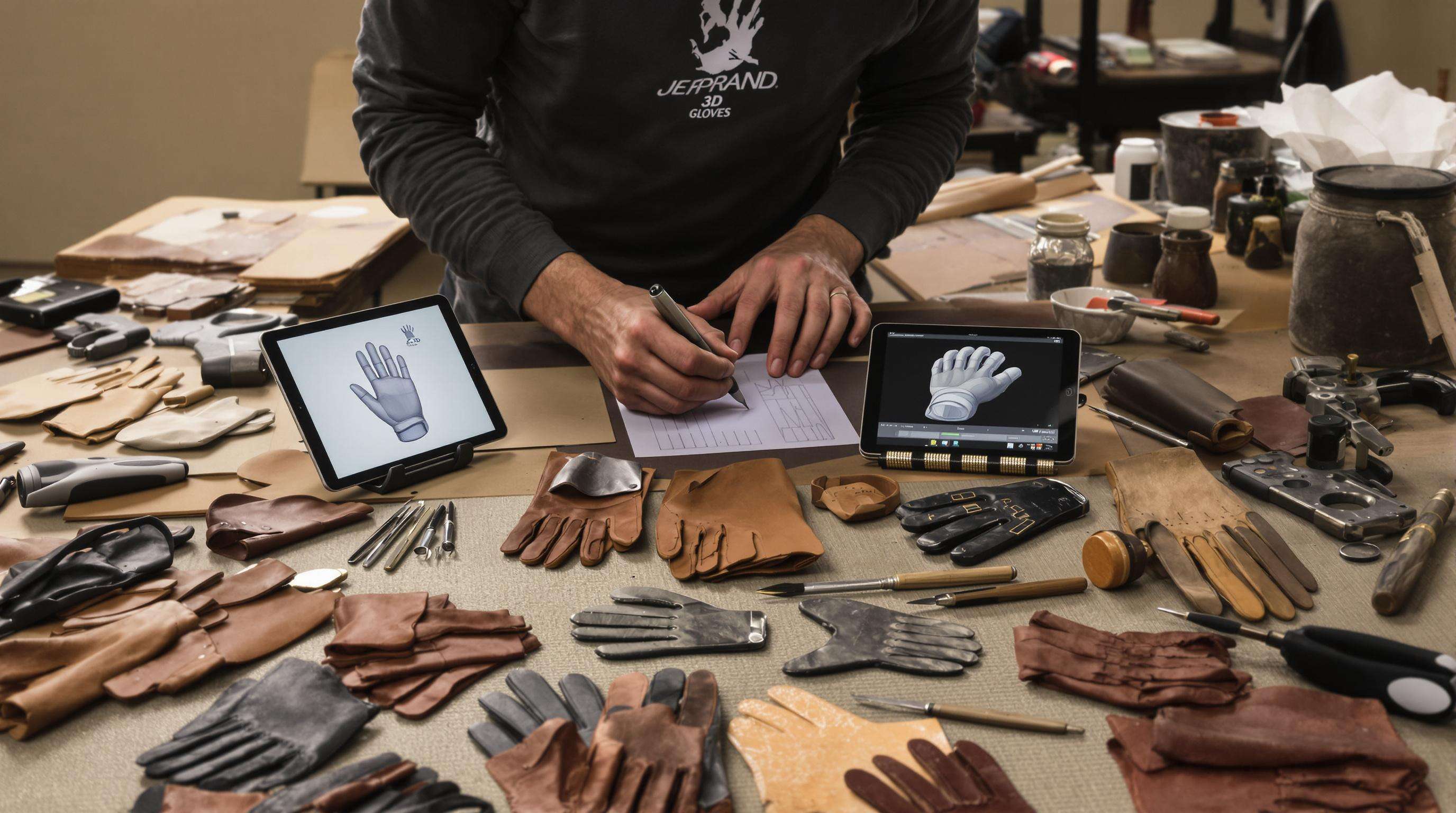The art of glove wrapping combines traditional craftsmanship with some pretty advanced engineering principles to create performance gear that fits like a second skin for athletes. These aren't your standard store bought gloves. The process involves careful hand stitching and multiple layers of material specifically designed around how each person's hands actually look and move. A recent market analysis shows something interesting too. Customization requests have jumped over 40% in just five years, which makes sense when we think about how serious athletes want every edge they can get. When gloves match up with someone's particular way of gripping equipment and where their hands naturally apply pressure, there's less chance of things slipping out during critical moments. Plus, fingers stay flexible enough to maintain normal range of motion without restriction.
High quality wrapping materials really strengthen those trouble spots in gloves where fingers bend and thumbs move, making them last about three times longer compared to what comes straight from the manufacturer. The look gets better too with things like different colored thread patterns or fading effects that run across the surface, all while keeping the glove strong enough for serious play. Studies indicate something interesting here too - around two thirds of college level athletes actually see these specially wrapped gloves as looking more professional, and this perception seems to translate into greater confidence when they're out there playing the game, simply because they feel better about how they appear to others.
| Material | Performance Benefit | Aesthetic Role |
|---|---|---|
| Full-grain leather | Molds to hand shape over time | Develops unique patina |
| Kevlar®-blend thread | Resists fraying at stress points | Enables intricate stitch patterns |
| Herringbone weave | Distributes impact force evenly | Adds textured visual depth |
Looking at data from around 12,000 glove design discussions shows that customization is clearly the top concern for customers, beating out terms like durability and how long it takes for gloves to break in. People want their gloves to have parts they can swap out or adjust based on what they need during different activities. Think replaceable palm padding or wrist straps that tighten just right. The market has taken notice of this trend, so many companies are starting to focus more on making gloves with adaptable components. Some brands have already begun redesigning their products with these flexible features built into the overall construction pattern of the gloves.

Reinforced wrist wraps make all the difference for catchers dealing with fastballs coming in at crazy speeds, whereas outfielders really appreciate those tapered fingers that help them grab balls flying over their shoulders without dropping anything important. The pros who specialize in customizing gear spend hours watching game footage to figure out exactly how tight or loose each wrap should be depending on a player's unique style. Take pitchers for instance they typically need thumb loops around 15 to maybe even 20 percent looser compared to what infielders get, which helps them throw those curveballs properly but still keeps everything under control. Last season alone, something like two thirds of all position players decided to switch up their glove wraps halfway through the season after noticing certain areas wearing down faster than others, basically trying to close any performance gaps they spotted.
A seventeen year old right handed pitcher saw his ERA drop by almost two full runs once he started using this special hybrid wrap that has kangaroo leather in the palm area and some synthetic material for the thumb part. The motion capture stuff they did actually showed something pretty interesting too the custom made version kept grip pressure at around 92 percent even after ninety pitches or more which is way better than the regular wraps that only hit about 74 percent consistency. After switching to this new setup, the kid reported feeling much more confident throwing those slower pitches. His self rating went from 5.2 all the way up to 8.6 out of ten according to these surveys done after making the change, as noted in research published by the Youth Sports Psychology Institute back in 2023.
MLB allows some tweaks to glove lacing as long as they stay within a quarter inch of the original stitching, but the NCAA draws a hard line against any heel padding thicker than 3 millimeters. For players moving from college to pro ball, this difference can be a real pain point. A recent survey by the Athletic Commission found that almost half (around 41%) of college athletes had to completely rewrap their gloves before stepping onto a professional field. The debate keeps heating up too regarding those fancy new materials showing up in baseball gear. Some folks are worried about carbon infused threads giving certain players an edge, particularly at the youth level where kids need to focus on developing skills instead of getting wrapped up in high tech equipment gimmicks.

When making gloves, the whole thing starts with getting to know the customer's hands really well. Artisans measure everything from hand size to how someone naturally grips things, plus what looks good to them personally. People work side by side with designers who use special tools to find that sweet spot between comfort when playing and looking sharp on the field. After this initial stage comes the prototype part. Craftsmen start by printing out palm shapes in three dimensions. They then try out different weaving techniques while putting the gloves through their paces in situations that mimic actual gameplay. This helps make sure the finished product can take punishment and still fit just right.
Using photogrammetry scans makes it possible to build digital replicas of hands, which helps create really accurate virtual models. According to the Gear Personalization Survey from last year, when customers can give feedback multiple times during design, they end up asking for fewer changes overall about 40% less than with fixed designs that don't allow adjustments. Through special online platforms, clients get to look at color-coded pressure maps and see how different parts come together in animated form. They can then approve specific elements like extra support where the thumb bends or how gradually the little finger tapers off before anything gets made.
Collaborative customization is now expected—nearly 8 in 10 buyers want real-time input during development. This co-creation model reduces returns by 32% and increases perceived product value by $87 per unit. Workshops support this shift with shared annotation tools and material libraries, transforming customers into active design partners.
Modern glove wrapping emphasizes self-expression through bold design choices. Athletes increasingly request neon color blocking and custom embroidery that reflect their on-field intensity—a trend highlighted in the 2025 Fitness Apparel Trends Report. Among players under 30, 63% associate vibrant wraps with a competitive edge (2024 Baseball Equipment Survey).
Color choices in glove wrapping influence both athlete mindset and opponent perception. Research from leading branding frameworks indicates:
Athletes report 22% higher confidence when glove colors align with their psychological profile (2023 Sports Psychology Journal).
| Persona Type | Design Elements | Common Positions |
|---|---|---|
| Minimalist | Single-tone leather, hidden stitching | Catchers, veteran players |
| Signature-Seeker | Initial embroidery, gradient dyes | Outfielders, team captains |
| Bold Innovator | Geometric patterns, metallic threads | Shortstops, rookie standouts |
The principle of "product-image congruity" explains why 68% of players feel they perform better when their wraps reflect their self-identity.
Innovative techniques now allow seamless integration of team branding:
| Team Element | Wrapping Technique | Durability Impact |
|---|---|---|
| Primary Colors | Dyed leather layering | +30% UV resistance |
| Mascot Logos | Laser-etch under lacquer | No structural compromise |
| Secondary Accents | Contrast thread weaving | Enhanced grip texture |
This approach strengthens team cohesion while preserving individuality—important for the 79% of high school athletes who value both school pride and personal expression (2024 Youth Sports Report).
When someone wraps their own hands around custom made gloves, those simple pieces of equipment transform into something special that lasts long after the game is over. A recent look at gear preferences among athletes showed that about two thirds of respondents connected personalized gloves with important life moments such as winning championships or saying goodbye to their sports careers. These kinds of gloves become really great gifts for people who have supported us through our sporting lives coaches, teachers, even fellow players they're physical reminders of what we accomplished together. More and more moms and dads are getting these custom wrapped gloves made for graduation day too. They often include the school colors somewhere on them and maybe stitch in the school motto as well, making them纪念品 that celebrate not just sports achievements but also academic successes.
Athletes are getting creative with advanced embroidery techniques to tell personal stories right on their gloves these days. Catchers sometimes put their kid's birthday somewhere noticeable like the thumb area, and older players often mark their gloves with special locations from home town fields. Take this college shortstop who secretly stitched Hebrew letters inside her glove as tribute to her grandma's journey across borders. She explained it meant "Every double play begins with her bravery." What we see happening is that gloves aren't just sports equipment anymore but become keepsakes for many people. About 4 out of 10 customers actually care more about what symbols mean than how pretty they look when choosing custom designs.
High school pitcher Jake Thompson got his hands on his dad's beat-up 1990s baseball glove, all cracked and faded from years of use. Some crafty artisans took that old leather and gave it new life with special cross-weave reinforcement, then stitched navy and gold threads that matched exactly what Jake wears on game day. What really stands out though? The glove now has their shared number #22 etched right there on the palm area. And if you look closely at the thumb pocket, there's a small copper plate that says "Third Base Line '96" – that was actually the exact spot where Jake's dad popped the question to his mom back in the day. "This isn't just any old glove anymore," Jake tells anyone who asks. "Every time I grab it before stepping onto the field, I feel connected to something bigger than myself." Projects like these show how restoring sports equipment keeps family traditions alive while still making them relevant for today's athletes facing their own set of challenges.
Glove wrapping is a premium customization technique that involves careful hand stitching and the use of multiple materials to enhance performance, durability, and aesthetic appeal for athletes.
Customization requests have increased due to athletes seeking every possible advantage. Tailor-made gloves match an athlete's grip and pressure points, reducing slip and maintaining flexibility.
Common materials include full-grain leather, Kevlar®-blend thread, and herringbone weave. Each material offers specific performance benefits and aesthetic roles.
High-quality wrapping materials reinforce areas prone to wear, making gloves last three times longer than standard products.
MLB allows some modifications within a quarter inch of original stitching; however, NCAA restricts heel padding to 3 millimeters, creating challenges for players transitioning to professional levels.
Yes, glove wraps can be customized based on specific player needs and positions, such as reinforced wrist wraps for catchers and tapered fingers for outfielders.
Color choices can affect athlete mindset and opponent perception, influencing confidence and alignment with personal identity.


Copyright © 2024 Sichuan Samson Technology Co., Ltd - Privacy policy